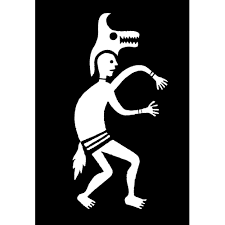
The Trickster. Remember him? Smeagol? The elf with the pointed hat? Kokopelli?
Sometimes when we’re talking about synchronicities and the trickster comes up, people have questions. Even though most of us know what a trickster is – or have an image of one from TV and movies, maybe a kind of elfin figure wearing a pointed hat or it looks like Smeagol, the gollum, in The Lord of the Rings. But tricksters come in all shapes and sizes and they aren’t necessarily human. Some trickster synchros are events.
In November 2019, the Veneto regional council, which is located on Venice’s Grand Canal, was flooded for the first time in its history – just after it rejected measures to combat climate change.
The historic Italian city has been brought to its knees by the worst flooding there in more than 50 years. And the council chamber in Ferro Fini Palace started to take in water around 10 p.m. local time, as councilors were debating the 2020 regional budget.
According to the deputy chairman of the environment committee, “Ironically, the chamber was flooded two minutes after the majority League, Brothers of Italy, and Forza Italia parties rejected our amendments to tackle climate change.”
This sure sounds like a trickster synchro. The regional council rejects measures to combat climate change and that ole trickster cackles, “Really, dudes?” A heartbeat or two later, the council chamber floods.
On a personal level, the trickster archetype can be animal or human, male or female, and is found throughout the mythology and folklore of all cultures. From the Native American coyote to the court jester and clown, from Kokopelli, Loki, Tezcatlipoca, Saci, Edshu and others, the trickster across cultures share similar characteristics. He’s playful but sometimes mean, sympathetic, outrageous and humorous because he does things outside of the boundaries of what society considers accepted behavior.
“Tricksters relish the disruption of the status quo, turning the ordinary world into chaos with their quick turns of phrase and physical antics,” wrote Joseph Campbell. “Although they may not change during the course of their journeys, their world and its inhabitants are transformed by their antics. The Trickster uses laughter to make characters see the absurdity of the situation, and perhaps force a change.”
Look how the trickster worked for Will Rogers, humorist, actor and writer.
He died in a plane crash with his aviator buddy, Wiley Post, shortly after taking off from a lagoon in Point Barrow, Alaska. Rogers’s typewriter was found in the debris, a piece of paper rolled into it, and the last word he typed was death. Even Rogers probably got a kick out of that one.
Or how about these?
Hours after famed Trappist monk Thomas Merton proclaimed in an important meeting with religious leaders that the times ahead were electrifying, he died by electrocution while sitting in the bathtub.
The last movie that John Huston directed before his death was called The Dead. The last book of poetry that Anne Sexton published before she committed suicide in 1974 was entitled The Death Notebooks.
At the time of his death, Philip K. Dick was working on a novel entitled The Owl in Daylight. In esoteric traditions, the owl is considered a messenger between the living and the dead. The last song that Hank Williams wrote was Angel of Death. When he died, he had a hit single at the top of the charts: I’ll Never Get Out of This World Alive.
Trickster synchros aren’t confined to just death and dying. Mythologist Joseph Campbell considered the trickster one of the most significant figures in Native American folklore. It “represents this power of the dynamic of the total psyche to overthrow programs… the trickster is an upsetting factor,” Campbell wrote, “…he breaks through….”
What’s interesting about that phrase, he breaks through, is that the often personal nature of trickster synchros are so in your face and wryly ironic that they break through whatever resistance you may harbor about a particular issue or relationship. You can’t help but laugh at yourself.








Trickster entities are fully capable of possession, according to Rachel Stavis, author of SISTER OF DARKNESS. They are drawn to people who have experienced a loss or some other deeply felt trauma and they usually stay with one individual for a lifetime. They drain life force from their victims, enhancing character traits that appear to resemble mood swings in some, chronic deep unhappiness in others. It’s in their best interests to keep the host alive as long as possible, so they aren’t lethal in the way other entities are.
You always have the most intriguing information, Cheryl!
I like to read. Curiosity is a hunger.
Hunger and addiction.
One and the same.